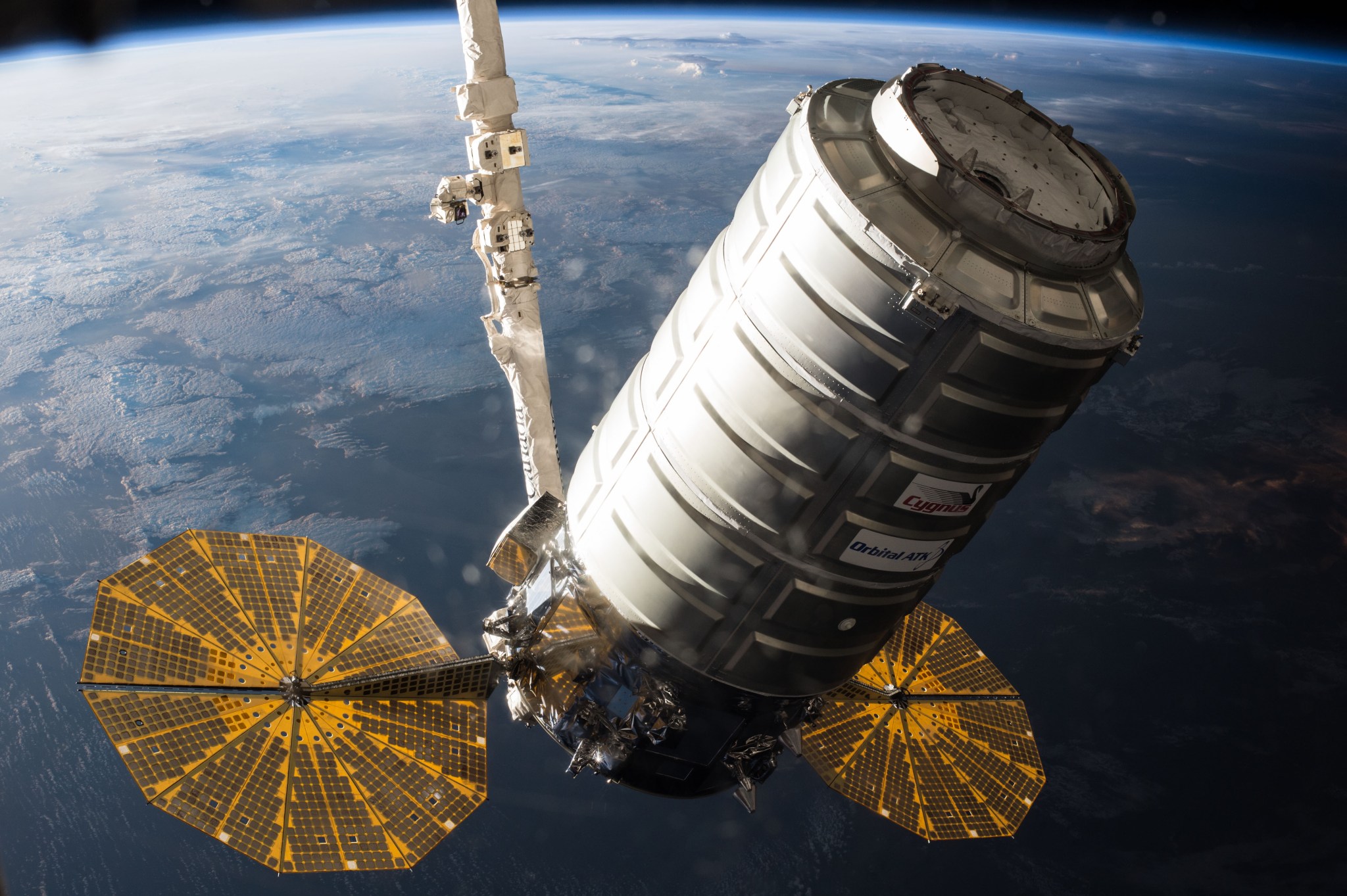
After delivering almost 7,500 pounds of cargo to support dozens of science experiments from around the world, the Orbital ATK Cygnus cargo spacecraft is set to leave the International Space Station Tuesday, June 14. NASA Television will provide live coverage of Cygnus’ departure beginning at 9 a.m. EDT.
Ground controllers will detach the Cygnus spacecraft, which arrived at the station March 26, from the Earth-facing side of the station’s Unity module using the Canadarm2 robotic arm. Robotics controllers will maneuver Cygnus into place and Expedition 47 robotic arm operators Tim Kopra of NASA and Tim Peake of ESA (European Space Agency) will give the command for its 9:30 a.m. release.
Five hours after departure, the Saffire-I experiment will take place onboard the uncrewed cargo craft. Saffire-I provides a new way to study a realistic fire on a spacecraft. This hasn’t been possible in the past because the risks for performing such studies on crewed spacecraft are too high. Instruments on the returning Cygnus will measure flame growth, oxygen use and more. Results could determine microgravity flammability limits for several spacecraft materials, help to validate NASA’s material selection criteria, and help scientists understand how microgravity and limited oxygen affect flame size. The investigation is crucial for the safety of current and future space missions.
Cygnus also will release five LEMUR CubeSats from an external deployer June 20, part of a remote sensing satellite constellation that provides global ship tracking and weather monitoring. The vehicle will remain in orbit until Wednesday, June 22, when its engines will fire twice, pushing it into Earth’s atmosphere where it will burn up over the Pacific Ocean. NASA TV will not provide a live broadcast of the Cygnus deorbit burn and re-entry.
Experiments delivered on Cygnus supported NASA and other research investigations during Expeditions 47 and 48, including studies in biology, biotechnology, physical science and Earth science — research that impacts life on Earth, and also will help us on the journey to Mars. Investigations studied realistic fire scenarios on a space vehicle, enabled the first space-based observations of meteors entering Earth’s atmosphere from space, explored how regolith behaves and moves in microgravity, tested a gecko-inspired adhesive gripping device that can stick on command in the harsh environment of space, and added a new 3-D printer in microgravity.
The Cygnus resupply craft launched March 22 on a United Launch Alliance Atlas V rocket from Cape Canaveral Air Force Station, Florida, for the company’s fifth NASA-contracted commercial resupply mission.
Get the full NASA TV schedule and video streaming information at:
https://www.nasa.gov/nasatv
Find more information on Orbital ATK’s mission at:
https://www.nasa.gov/orbitalatk
Keep up with the International Space Station, and its research and crews, at:
https://www.nasa.gov/station
-end-
Kathryn Hambleton
Headquarters, Washington
202-358-1100
kathryn.hambleton@nasa.gov
Dan Huot
Johnson Space Center, Houston
281-483-5111
daniel.g.huot@nasa.gov




























